I have created a synthetic image that consists of a circle at the centre of a box with the code below.
%# Create a logical image of a circle with image size specified as follows:
imageSizeY = 400;
imageSizeX = 300;
[ygv, xgv] = meshgrid(1:imageSizeY, 1:imageSizeX);
%# Next create a logical mask for the circle with specified radius and center
centerY = imageSizeY/2;
centerX = imageSizeX/2;
radius = 100;
Img = double( (ygv - centerY).^2 + (xgv - centerX).^2 <= radius.^2 );
%# change image labels from double to numeric
for ii = 1:numel(Img)
if Img(ii) == 0
Img(ii) = 2; %change label from 0 to 2
end
end
%# plot image
RI = imref2d(size(Img),[0 size(Img, 2)],[0 size(Img, 1)]);
figure, imshow(Img, RI, [], 'InitialMagnification','fit');
Now, i need to create a rectangular mask (with label == 3, and row/col dimensions: 1 by imageSizeX) across the image from top to bottom and at known angles with the edges of the circle (see attached figure). Also, how can i make the rectangle thicker than 1 by imageSizeX?. As another option, I would love to try having the rectangle stop at say column 350. Lastly, any ideas how I can improve on the resolution? I mean is it possible to keep the image size the same while increasing/decreasing the resolution.
I have no idea how to go about this. Please i need any help/advice/suggestions that i can get. Many thanks!.




